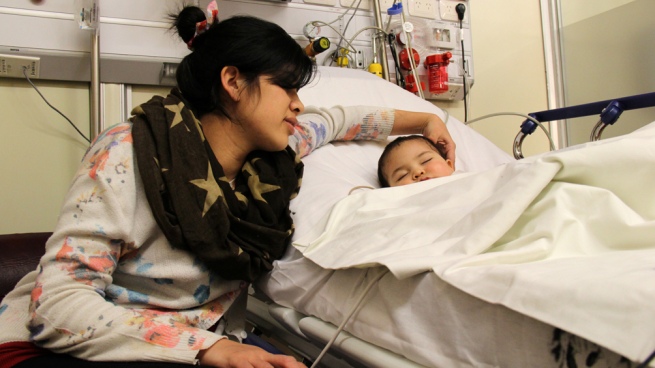On World Congenital Heart Disease Day, specialists highlighted the importance of performing fetal cardiac evaluation, a “critical study that marks the difference between life and death”.
This day, which is commemorated every February 14, seeks to raise awareness about the malformations that affect approximately 7,000 newborns in the country each year.
“The most critical point is early detection, that is what really changes the outcome, it marks the difference between life and death, because the sooner the diagnosis is established, the more timely treatment can be done in the right place,” Ignacio Lugones, head of the Cardiovascular Surgery unit of the Doctor Pedro Elizalde Children’s General Hospital, pointed out.
According to him National Program of Congenital Heart Diseases, this type of congenital anomalies in the heart or adjacent blood vessels is the most common among newbornsand the leading cause of death in the first year of life.
Likewise, depending on the type of heart disease – there are more than 30 types – many of the effects produced must require careful monitoring throughout life.
“The main recommendation to the population is that they become aware that these diseases exist and that they can affect anyone”Lugones said.
And added that “It is essential that people screen for this disease, particularly in the prenatal stage of fetal diagnosis” through the fetal echocardiogram supervised by a specialist.
In our country, this type of heart disease affects 1% of all pregnancies, which is equivalent to around 7,000 babies per year, that is, “20 children who are born with this type of disease every day,” explained the cardiologist Diego Esandi.
According to the degree of the defect that occurs, the consequences may be “small, mild or moderate; some very serious and some, very few, even incompatible with life”, explained Esandi and added that “hence the early diagnosis and Adequate information and guidance is essential for this condition to transition in the best possible way”.
The professional noted preventive measures such as taking folic acid before and during pregnancy, paying attention to the consumption of some medicines -by the mother- such as phenobarbital, hydantoin, retinoic acid, warfarin, acetylsalicylic acid, metronidazole, alcohol, indomethacin and antidepressants; or exposure to radiation, in addition to controlling the diet.
The detection of congenital heart disease for more than 25 years has focused on fetal diagnosis.
Although there is a small percentage of genetic factors that affect this type of malformation, most patients “have not had exposure to drugs, x-rays, vaccines or new treatments”, but simply “something happened and we could not find for what reason it happened,” said Esandi.
For the cardiologist “The detection of congenital heart disease for more than 25 years has been focused on fetal diagnosis. From week 18 and 20, a study of the baby’s heart is 100% feasible, and in this study look for the existence of heart defects.”
Also, the form of manifestation of heart disease in babies during the breastfeeding period is through the appearance of sweating with feeding, “sweating that is not common in newborns, but makes the chest, mouth and the face”, explained Gladys Salgado, head of cardiology at the Garrahan Pediatric Hospital.
In addition, as part of the symptoms of advanced heart failure, “pallor, blue coloration around the mouth and eyes and coldness in the extremities” are observed.

In contrast, in older children or adults, a “decreased functional capacity” is experienced, which implies a lower tolerance for efforts, especially to do an intense activity such as running.
“As this heart failure progresses, this drop in functional capacity is seen more and more in lighter exercises, for example no longer running but walking, where they begin to feel short of breath”Salgado detailed.
The doctor also indicated that although not all heart diseases “debut in the newborn” and some begin to have symptoms in later periods, the surgical results for heart disease have developed “enormously” in recent decades and “almost 90% have some degree of surgical resolution.
“Today we have almost 80% of our population with heart disease that can reach adulthood without major complications” and for this reason he urged parents “not to be overcome by anguish.”
Finally, Lugones also pointed out that the process to determine the existence or not of this type of malformation in ultrasound is linked to the role of the obstetrician who observes “whether the heart is normal or abnormal.”
In the event that something unusual is found, the obstetrician should refer the case to a pediatric cardiologist who establishes the diagnosis and coordinates with the mother “so that the child is born in a place where he has the possibility of being cared for by his heart disease, since few centers have a high-complexity neonatal ward,” concluded the cardiologist.

















